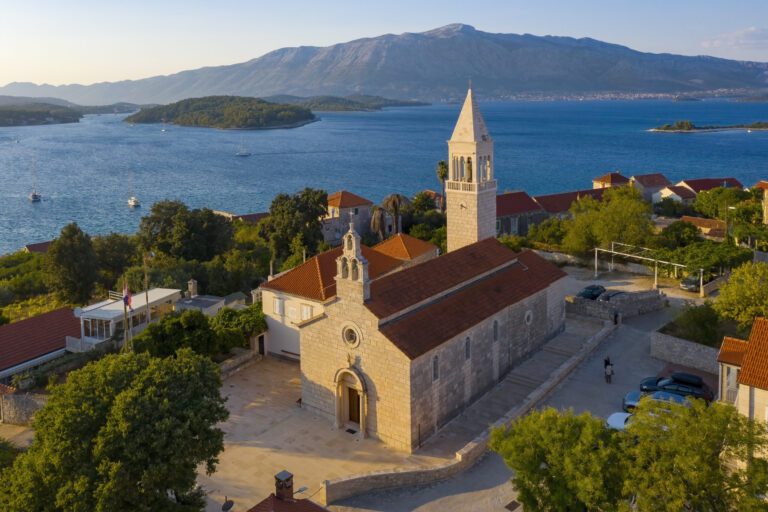Explore the island, which the ancient Greeks called "Black Korčula" (Greek: Korkyra Melaina; Latin: Korkyra Nigra) because of its dense forest, and according to legend, it was first discovered by the Greek hero Antenor fleeing from Troy.
Walls and towers defended the strategic position of the town of Korčula. The layout of the streets and squares was designed in the form of a herringbone to provide safety and comfort to its residents. As early as 1214, the Statute of the city and island of Korčula regulated the life of the people of Korčula with its provisions.
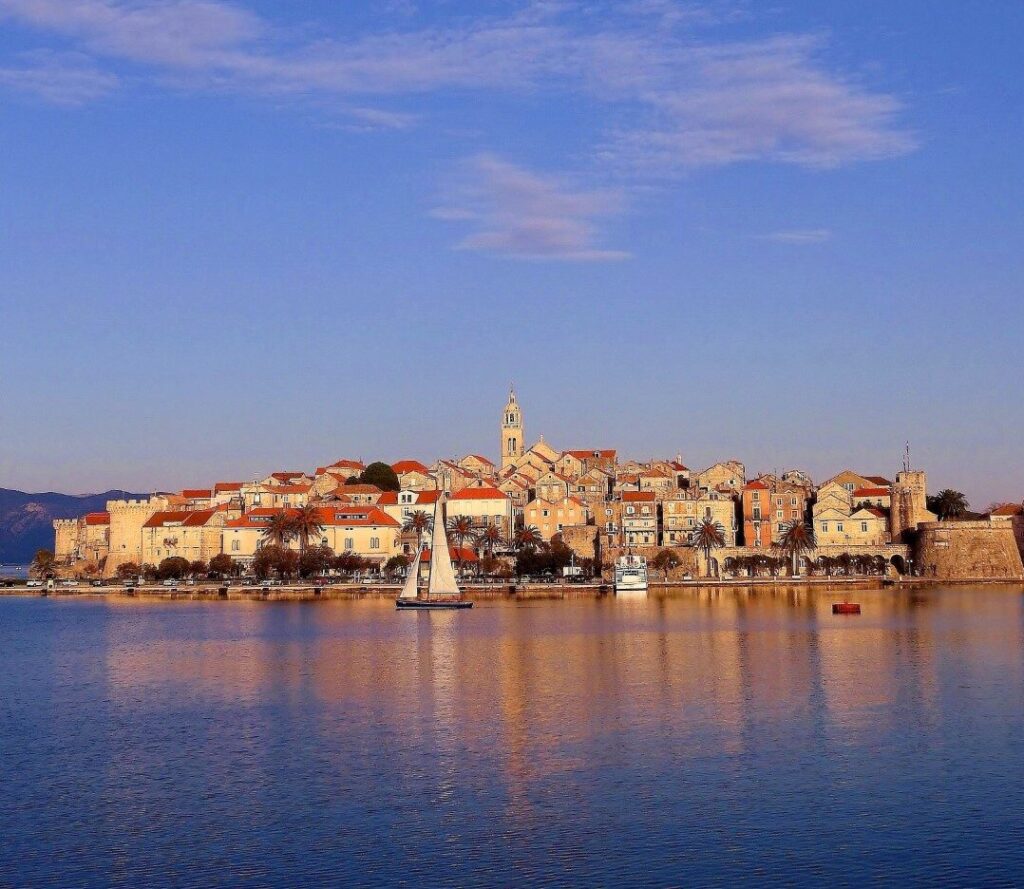

Take a walk through the city and get to know the religious traditions of the brotherhoods: All Saints (1301), St. Roka (1575) and St. Michael or the Blessed Virgin Mary of Comfort-Belt (1603). Fraternities participate in processions throughout the year, the most impressive of which are during Holy Week and on Holy Friday and for the Feast of St. Todor (July 29), the heavenly co-patron of the city of Korčula, when "veli vosak" - "torci", "cereferali", "crosses" and all the brilliant liturgical jewelry of the brotherhoods - is taken out of the brotherhood halls.
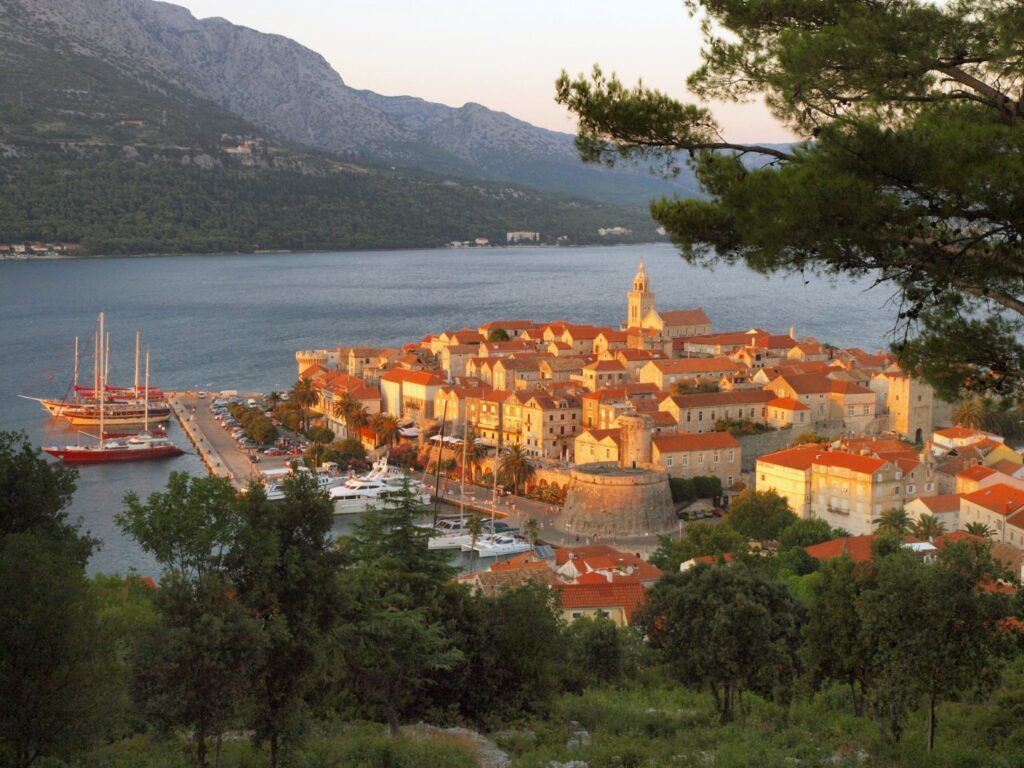

Don't miss the performance of the knightly game Moreška, which has been handed down for centuries from generation to generation to the pride of the people of Korčula. On the List of Protected Cultural Properties of the Republic of Croatia, in addition to moreška, there is also a dance made of colors with swords - kumpanija, which is performed in Pupnat, Čar, Smokvica, Blato and Vela Luka, and moštra, which is performed in Žrnovo. The oldest record of Moreška comes from 1666, and the Law of Companies from Žrnovo dates from 1620, while the oldest written document about companies is the Statute of the City and Island of Korčula (1214), which mentions an organized army on the island under that name.
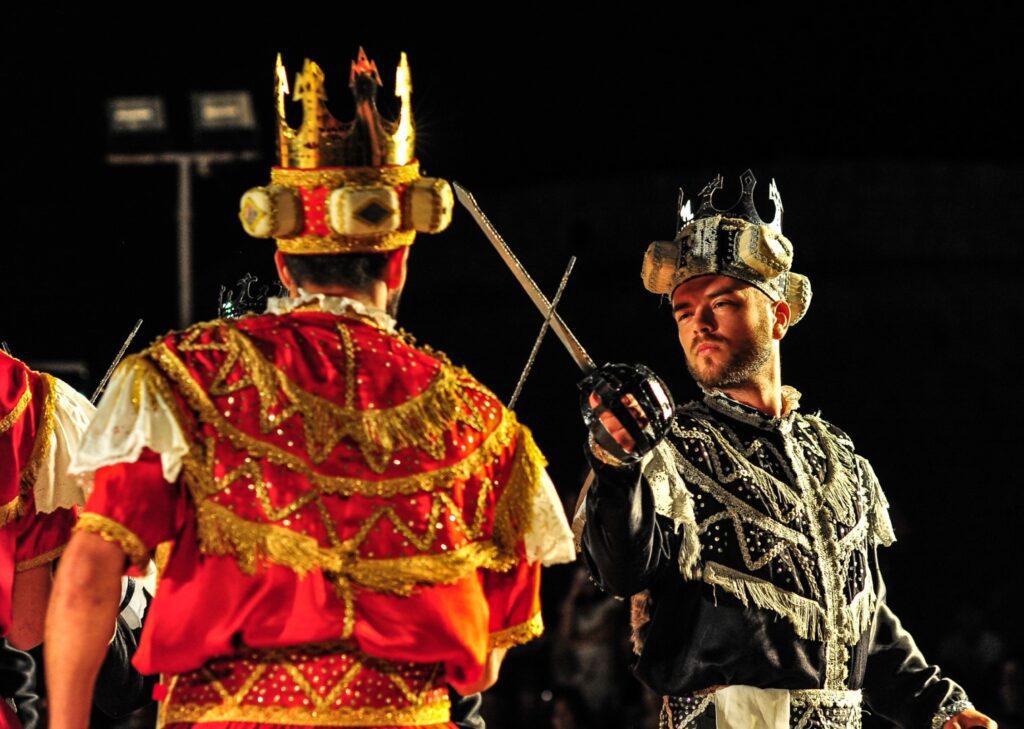

Inside the walls of the Old Town, you can live in an "open-air museum", visit: the cathedral of St. Mark, the Abbey Treasury, the City Museum, the Mark Polo Interpretation Center, the Icon Collection in the Hall of the Brotherhood of All Saints, the Revelin Tower, churches and galleries.
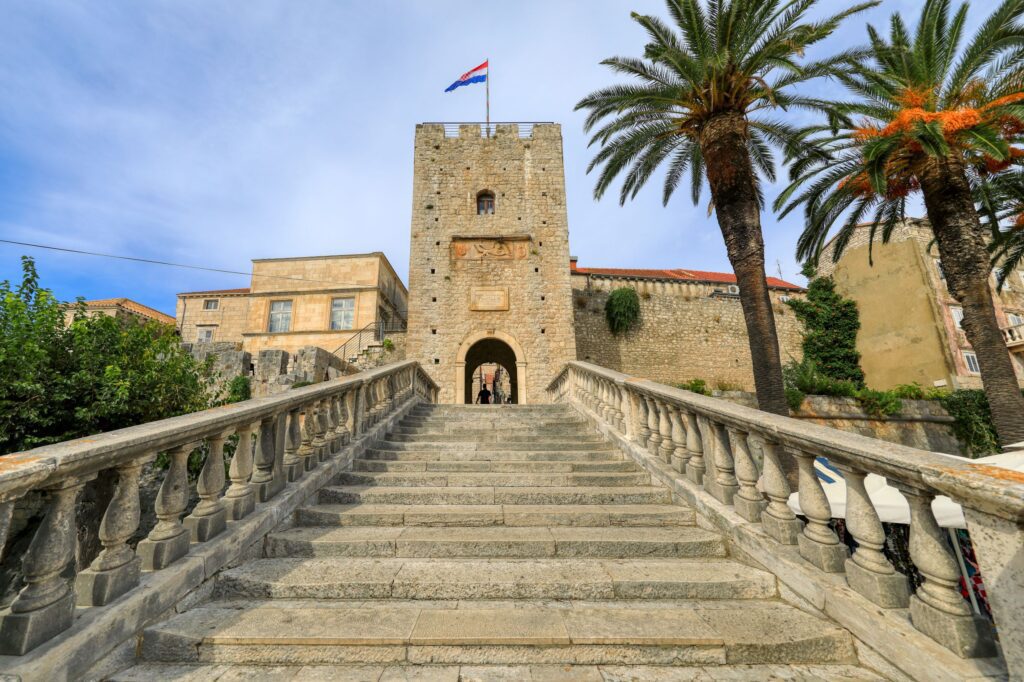



The city museum was opened in 1957. It is located in the Renaissance Gabriellis Palace. By walking through the museum, you can experience the cultural and economic past of Korčula and its natural wealth. The age of the fossil remains goes back to the Mesozoic, the Cretaceous period. The archaeological collection houses the material remains of human activity from prehistoric times to late antiquity and early Christianity. The most prominent subject is the Lumbard Psephism.
The events that took place in the Middle Ages determined the history of Korčula. These are the origin of the Statute of the city and island of Korčula in 1214, the establishment of the Korčula Diocese in 1300, and the foundation of the Brotherhood of All Saints in 1301.
Moreška and kumpanie, protected intangible assets of the Republic of Croatia, are presented with photos and swords.
The works of contemporary Korčula, domestic and international authors are an expression of artistic creativity on Korčula in the 20th and 21st centuries. The Memorial Collection of Petr Šegedin, one of the most important Croatian writers and thinkers of the 20th century, stands out. In the attic of the palace is the original kitchen with a fireplace. It represents a typical island diet, which is confirmed by its position on the UNESCO list.
Arturo Marinović's goldsmith's workshop is the last one in Korčula jewelry store. Blacksmithing and goldsmithing were among the trades that characterized Korčula throughout the past.
You can buy tickets here .
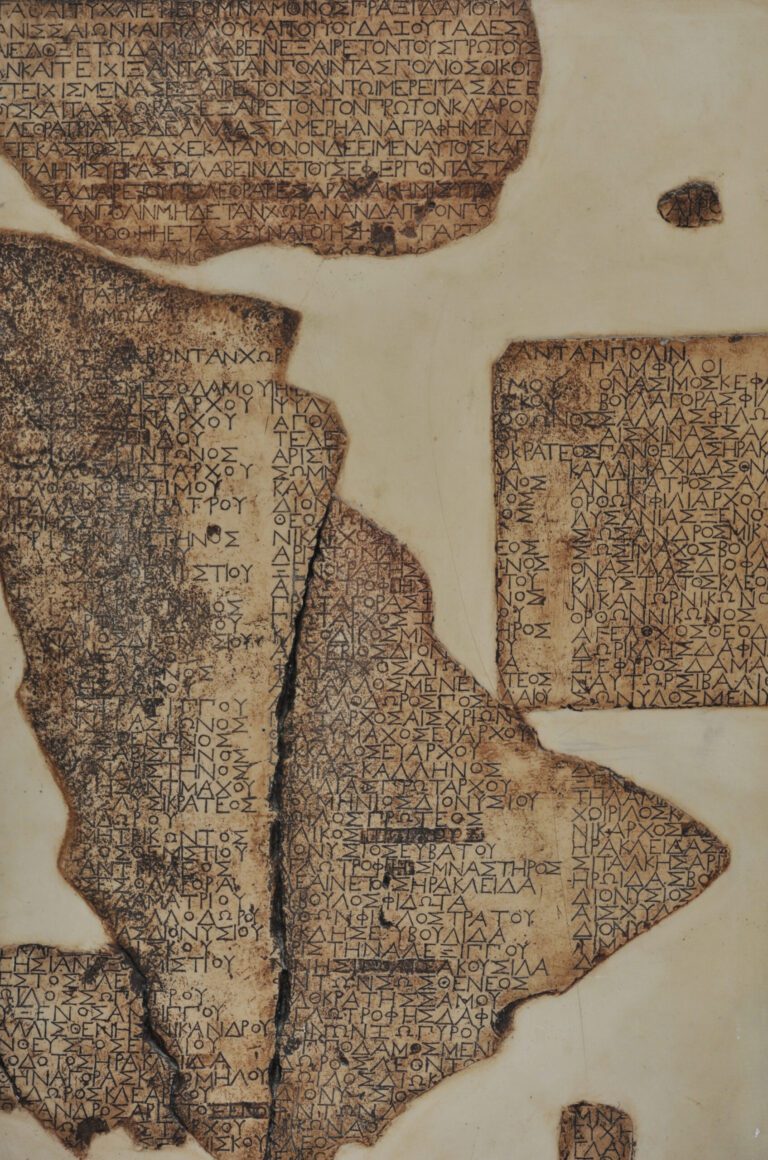

The greatest traveler and explorer of all time, Marco Polo, was born here (Korčula, 1254 - Venice, 1324). Along with inscriptions and displays that remind us of the researcher, the view from the family observation tower is interesting.
7.9.1298. a great naval battle took place between the Genoese and Venetian fleets under the town of Korčula; in this battle, the Venetian fleet was defeated, and the Genoese took a great one among their prisoners Marco Polo who was released in 1299 for a large ransom.
Imprisoned in the Genoese prison, Marco Polo narrated his experiences from the trip to China to the scribe Rustichelio, which were recorded in the book "Il Milione".
The family house of the Poles in Mleci disappeared and gave way to a theater, and in Korčula the family house was preserved, as well as the memory of the great Marko. Today, the Depolo family is one of the oldest Korčula families. The oldest description of the aforementioned battle is kept in the National Library in Paris.
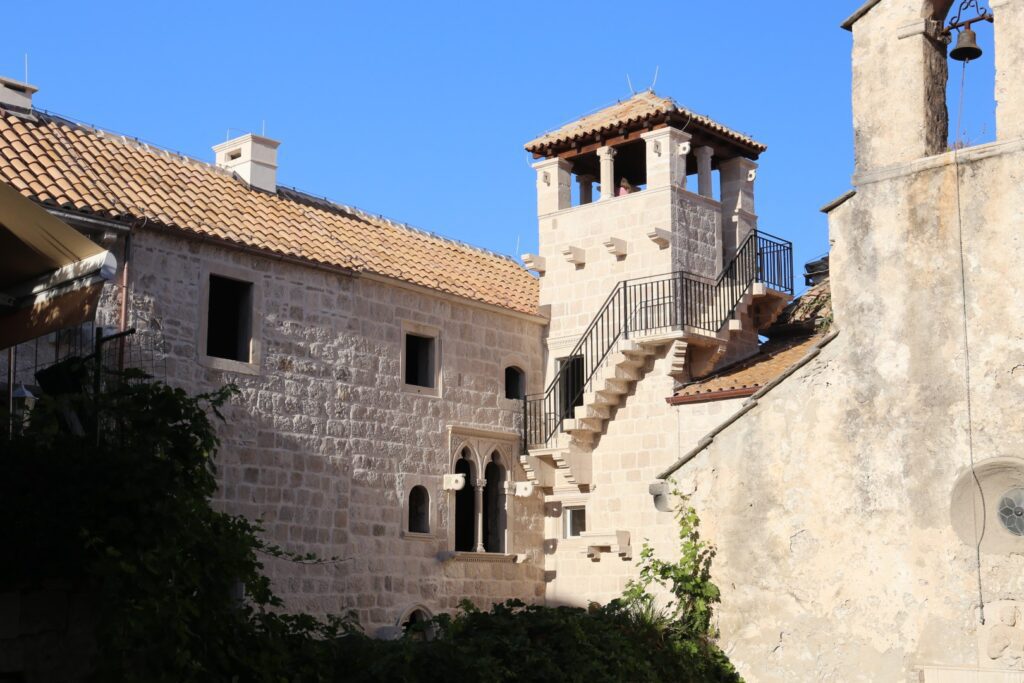

Cathedral of St. Marka is the center of religious life and the most beautiful Gothic Renaissance monument in the old town Korčula. It was built by Italian masters, but mostly local builders in the 14th, 15th and 16th centuries. The greatest among them is Marko Andrijić, who created his masterpieces while working on this building: the upper part of the bell tower and the ciborium above the main altar in the central nave dedicated to St. Mark, the patron saint of Korčula.
The main portal with features of the Romanesque and Gothic styles is the work of the Italian master Bonino from Milan.
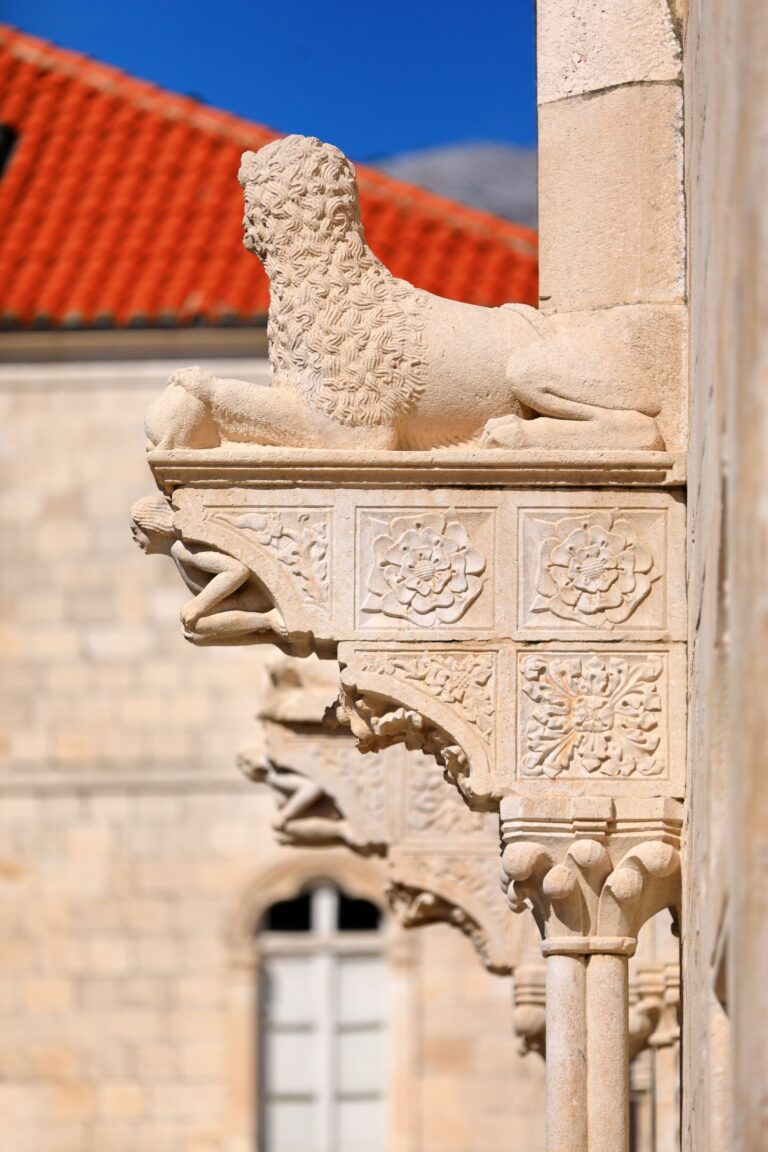

The southern side nave is dedicated to St. Jakov, northern st. Ivan, and the votive chapel of St. Deadline. The altars in the cathedral are decorated with many artistic paintings starting from Jacopo Tintoretto and other Italian Italian painters. Among local sculptors, the works of Fran Čučić, Ivan Meštrović, Ivan Kerdić, Fran Kršinić, Alojzij Lozica and Izvor Oreb should be highlighted.
You can buy tickets here.
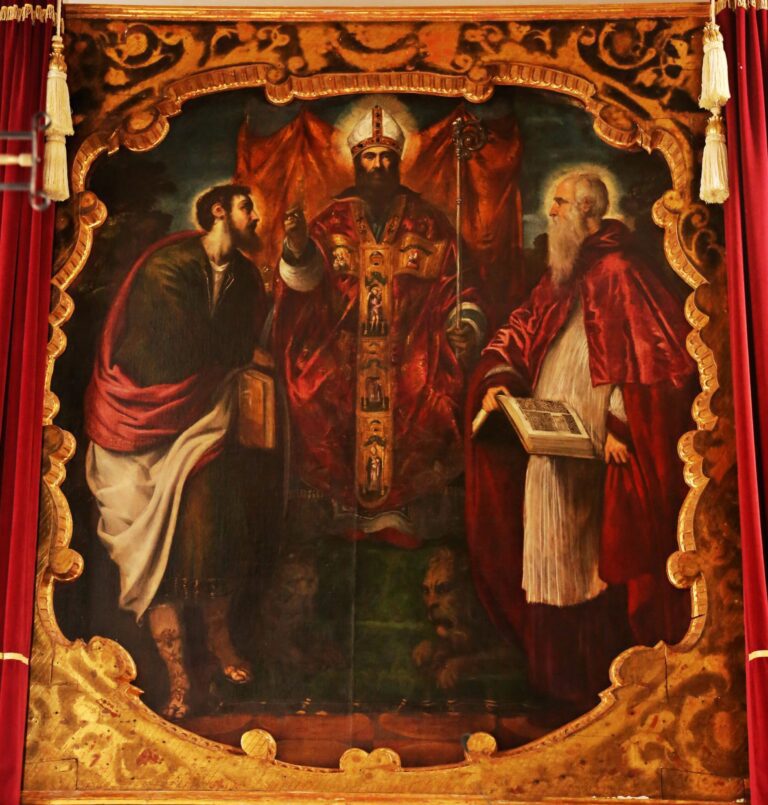

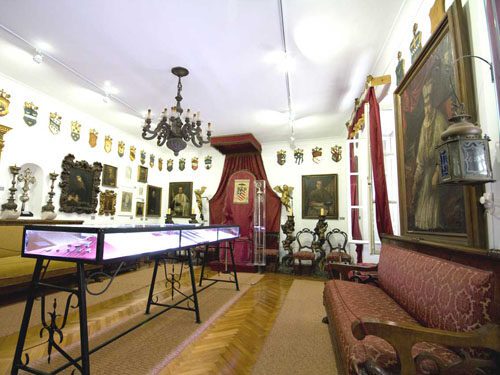

The treasury is located in the center of the walled old town of the city of Korčula, on Saint Mark's Square, in a beautiful Bishop's palace. The treasury was founded and opened to the public in 1954. The treasury houses very rich collections, including: a collection of icons, a lapidary (a place where stones are exposed (Latin: lapis lazuli) monuments and interesting archaeological fragments), a collection of old coats of arms, a collection of Dalmatian art, a collection of Italian Renaissance art, a collection of reliquaries, liturgical vestments and a collection of contemporary Croatian art. On the ground floor of the palace there is a parish office, a library and an archive. On the ground floor there is also a very interesting exhibition presented as an old kitchen, which shows the old way of life in the kitchen, which in the past was the central place of life in old households.
You can buy tickets here.
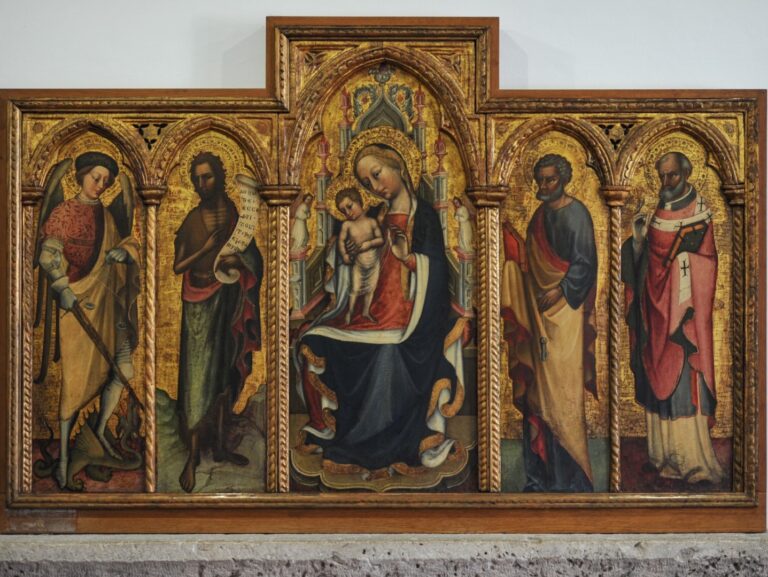

Veliki Revelin Tower (Land Gate) was built in 1485, and an arsenal (weapon storage) from 1572 was located next to it. The Arsenal was built at a time when military importance was growing Korculae for the Venetian Republic, which in the 18th century had a winter anchorage for the war fleet in Korčula.
Above the entrance of the Land Gate are two symbols of Korčula's history: a plaque with the winged lion of Saint Mark as a symbol of the rule of the Venetian Republic, and a commemorative plaque on the 1000th anniversary of the coronation of the first Croatian king, Tomislav.
The Veliki Revelin tower houses the permanent exhibition "Moreška", open to visitors from mid-June to the beginning of September. The earliest photographs of the Moreška from Korčula, from the end of the 19th century, a description of the Moreška's clothing, examples of clothing, older examples of swords, historical descriptions of the Moreška, as well as the Decision of the Ministry of Culture of the Republic of Croatia are on display.
You can buy tickets here.
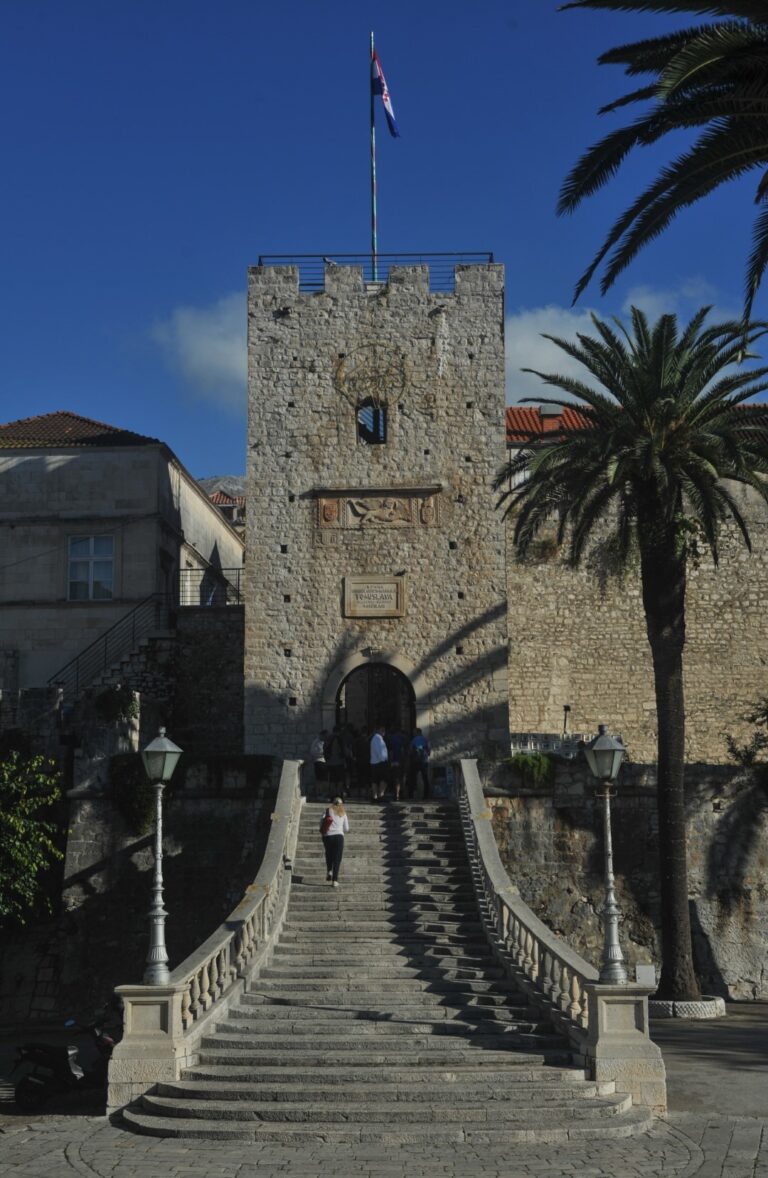

The Church and Brotherhood of All Saints are among the oldest traditions of the city. The church was built at the beginning of the 15th century on the site of an older church (10th/13th century), which was the first cathedral of the Korčula bishop (1300); in 1301, the oldest Korculan Brotherhood of All Saints or the Brotherhood of the Good Death was founded in it.
Opposite the entrance to the church is the entrance to the house of the Brotherhood of All Saints. On the reliefs above the entrance door, the brothers of this flagellant brotherhood from 1301 can be seen.
A collection of icons from the Greek island of Crete is displayed on both walls. In the war that was fought from 1645 to 1669 between Venice and Turkey for the island of Crete (Candia, Candian Wars), the Korčula war galley also took part.
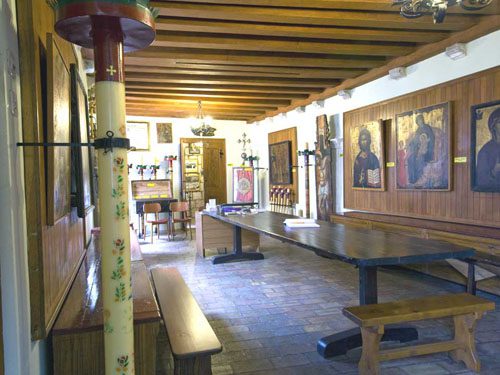



Church of St. Mihovila is located on the Square of Antun and Stjepan Radić across from the town hall.
It was mentioned as early as the beginning of the 15th century, and later became the church of the Brotherhood of the Blessed Virgin Mary of Consolation - from the belt, founded in 1603.
During the 17th and 18th centuries, the church got its final baroque appearance, and the chapel itself, dedicated to Our Lady of Consolation, was added to the church at the end of the 19th century. On the main altar from the 18th century, there is a painting by Dominic Maggiotto depicting Our Lady of Consolation.
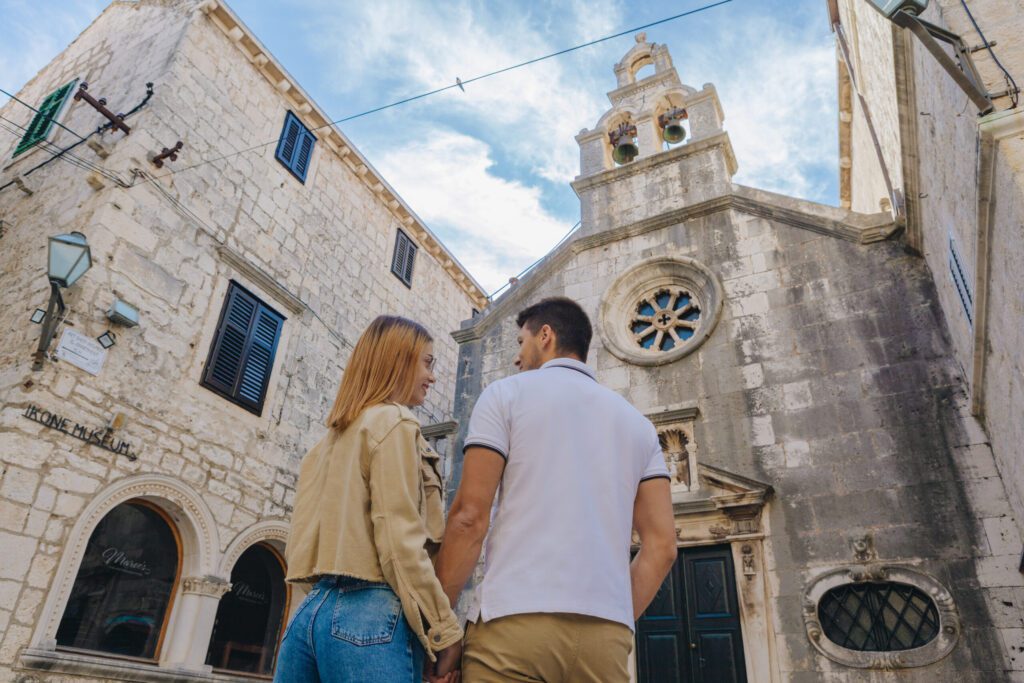

Maximilian Vanka (1889-1963) Croatian painter - celebrated as the finest Croatian portraitist in the 1920s and 1930s. Maksimilijan Vanka's collection, together with his house and studio at Korčula, were donated to the Academy of Sciences and Arts in 1964 by his widow Margaret Stettin Vanka. The villa contains a memorial collection and was opened to the public in 1969. Vanka is an important name in modern Croatian art. He was a corresponding member of the Academy of Sciences and Arts in Zagreb and a professor at the Academy of Fine Arts in Zagreb, until his departure to the United States in 1934. Maksimilijan Vanka's collection in Korčula represents a cross-section of his work from the 1920s.
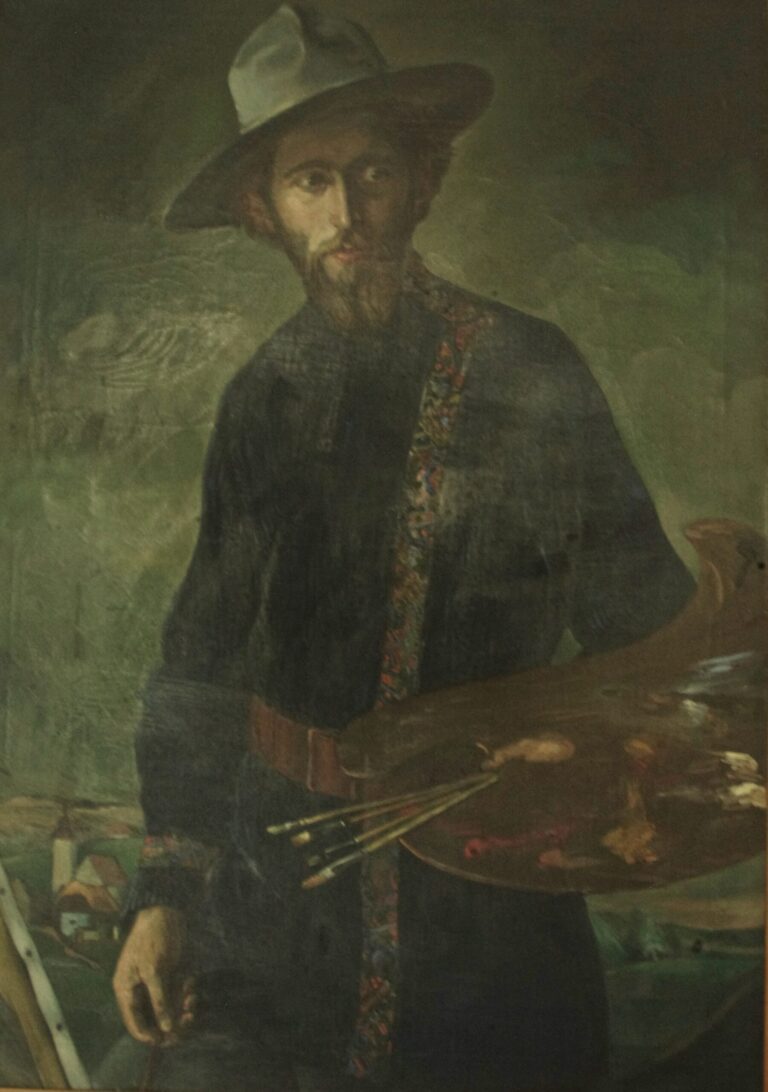

After seeing the sights of the town of Korčula, start discovering one of the most beautiful and romantic islands. Picturesque places located on the slopes of the hills will delight you with the stone porches of ancient houses built in the dry-wall technique, with paved courtyards.
Visiting Mud , located on several hills, don't miss seeing the parish church, the unique row of linden trees in Zlinje, the Barilo ethno collection, the sanctuary and museum of Blessed Mary the Blessed Jesus Petković and the "Blato Cultural Center" with an exhibition of the extremely important archaeological site of Kopila as well as works by contemporary island academic artists in "Nataša Cetinić" gallery.
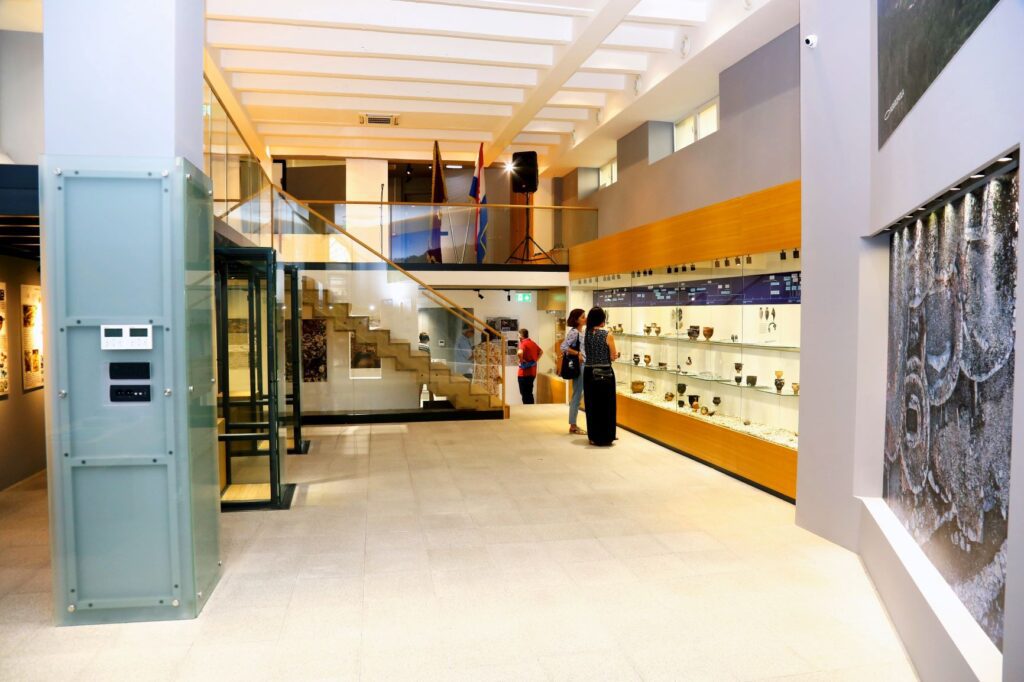

Ethno House Barilo is located in the center Mud, in the old family house Marinović. It is a unique place on the island Korčula, where you can feel and taste all the beauty of the traditional life on the island, which has already been almost forgotten. The collection today has over 3,000 exhibition items, organized in several exhibition spaces: fireplace, living room, bedroom, kitchen, room with a large collection of folk costumes, clothes and handicrafts from ancient times.
The outer part of the collection consists of agricultural tools, fishing equipment and numerous stone objects from everyday use. There is also a garden where you can feel and taste the autochthonous aromatic medicinal and ornamental plants of the island of Korčula. A walk through this family museum is a walk through the bygone days of island life. The collection has the status of a cultural asset at the Ministry of Culture and Media of the Republic of Croatia.
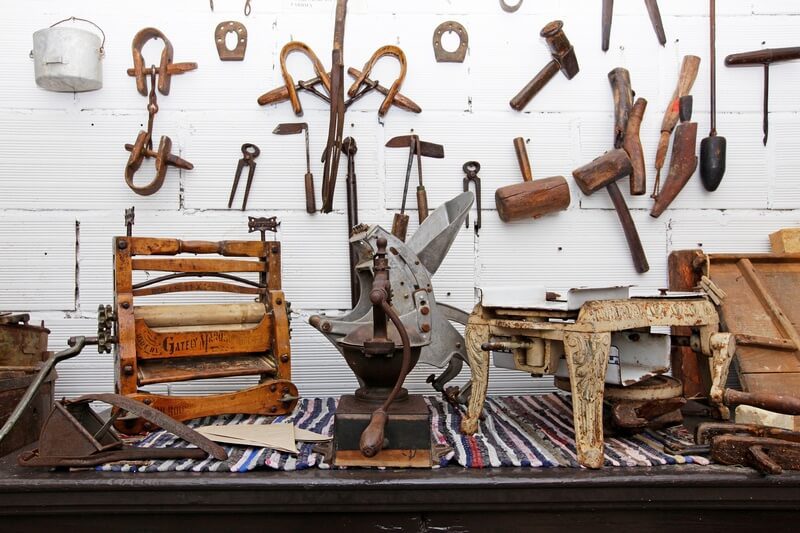



Vela Luka is home to many gifted musicians and
artists, hardworking and versatile people, as well as a place of tradition. The cultural center is located in the center of the city, next to the parish church of St. Josip, and consists of museums, galleries and libraries, and the richness and diversity of the history, art and cultural heritage of Vela Luka are shown through several valuable museum collections; an archaeological collection, a gifted international collection of drawings, prints and small sculptures, and a collection of ship models carved in wood. The international collection is the result of many donations from the country and abroad to artists after Vela Luka was hit by a tidal wave in the summer of 1978. Two sculptures by Henry Moore
dominate the collection, which are also the only two works by this distinguished artist in the Croatian territory.
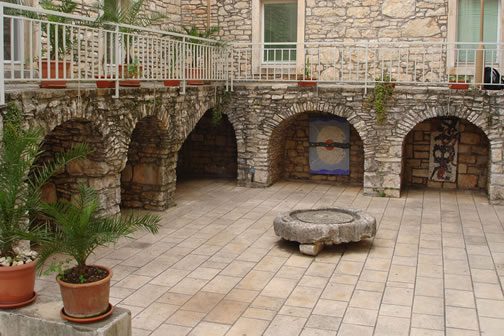

Parish church St. Josip is the pride of Vela Luka. It was built on the initiative of Dubrovnik bishop Antun Giurice, as the church of the youngest parish on the island of Korčula. Construction began in August 1846, and in August 1848 the church was already completed, consecrated and opened for ceremonies.
Stairs lead to the church from its western side towards the entrance. The belfry with three bells was built on the southwestern part of the square, to the right of the church portal, in 1871. The bell tower has a clock from 1876. The church was first renovated in 1898, and a year later the organ was installed.
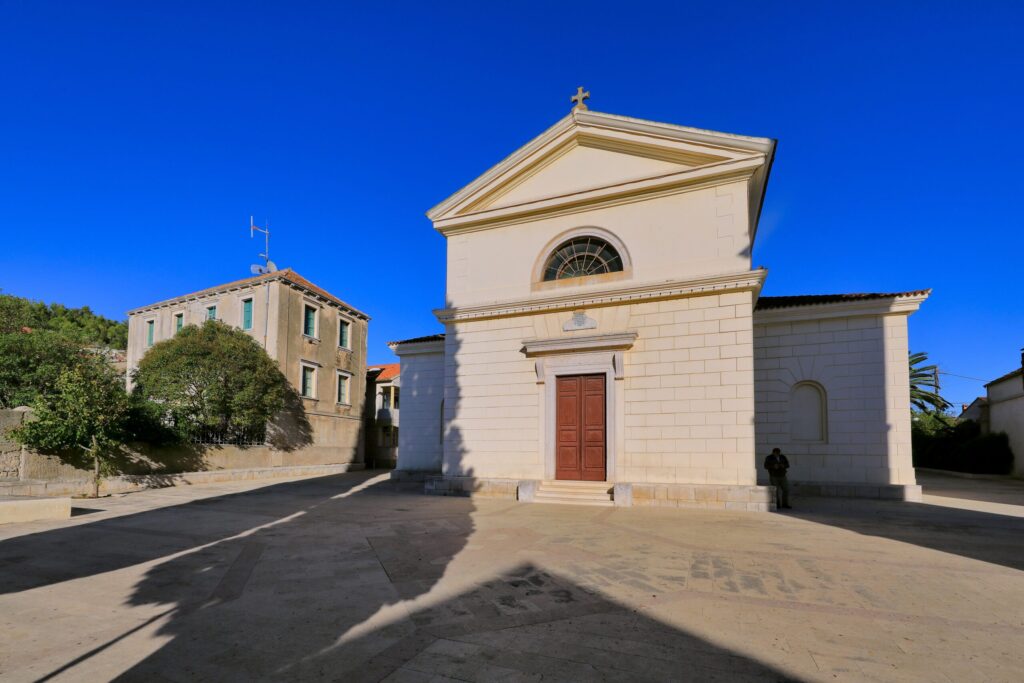

Vela Spila, a unique combination of natural and cultural heritage, is nearby Vele Luka, from which there is a beautiful panoramic view of the Veloška bay as well as the islets further out in the open sea.
This cave locality hides a unique ambience in the background of which there are rocks furrowed by millennia, while there are two large openings in the ceiling - "Velo" and "Malo ždrilo". In addition to its unique natural beauty, Vela Spila bears witness to the continuity of life that took place in this hidden place during
prehistoric periods, and according to its importance, world scientists classify it as the "cradle" of Western civilization.
Lots of ceramic fragments found, human remains, obsidian finds, trace
volcanic ash and various other archaeological materials, give Vela spila an exceptional value, and given that the research has not yet been completed, we can only guess what secrets this mysterious and priceless site still hides. Take a walk along this wonderful trail, experience Vela Luka from the most beautiful perspective and step into 20,000-year-old prehistoric times, a place on the westernmost part of the island of Korčula.
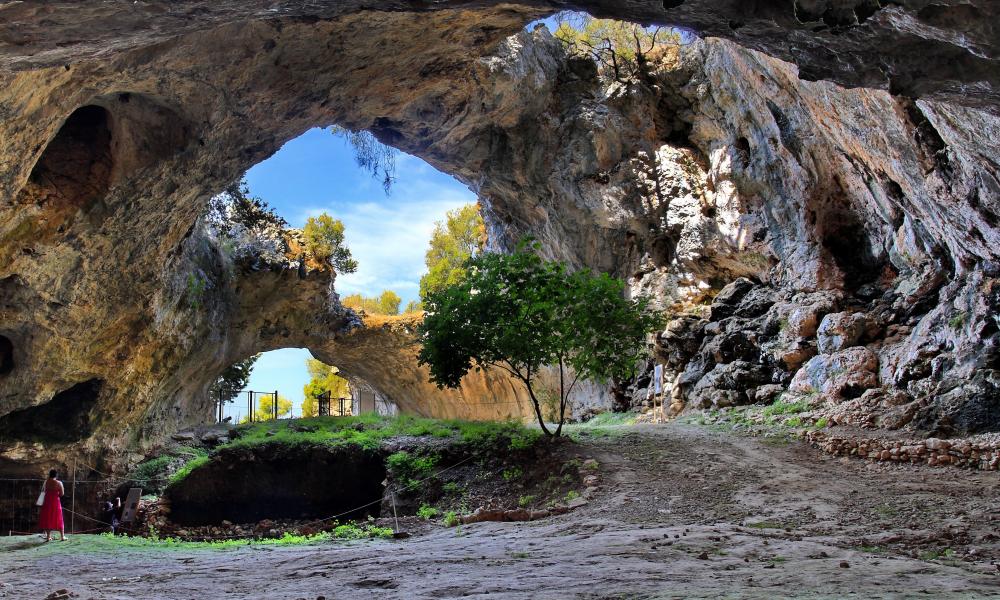

In Smokvica, see the largest island church on the Croatian coast of the Adriatic and the Museum of Gold and Silver.
The parish church of the Purification of Mary (Apparition of the Lord in the Temple) in Smokvica is one of the largest in the Dubrovnik diocese. The parish church was built in the neo-Romanesque style. The church has three naves with a large apse (dimensions 33.5 m x 17.40 m). The front of the church is decorated with a beautiful portal decorated with a stone relief "Appearance of Jesus in the Temple" and a large rosette. The construction of the church began in 1902 and lasted until 1920. The bell tower was built from 1920 to 1936. It is 36 meters high, all of hewn stone with a conical stone finial and an iron cross on top.
The lodge in its present form dates back to 1700. The lodge once played an important role in the life of the social community in Smokvica. In it, the locals would meet regularly to solve everyday problems. Judgments in disputes were made there and the leadership of the place was elected.
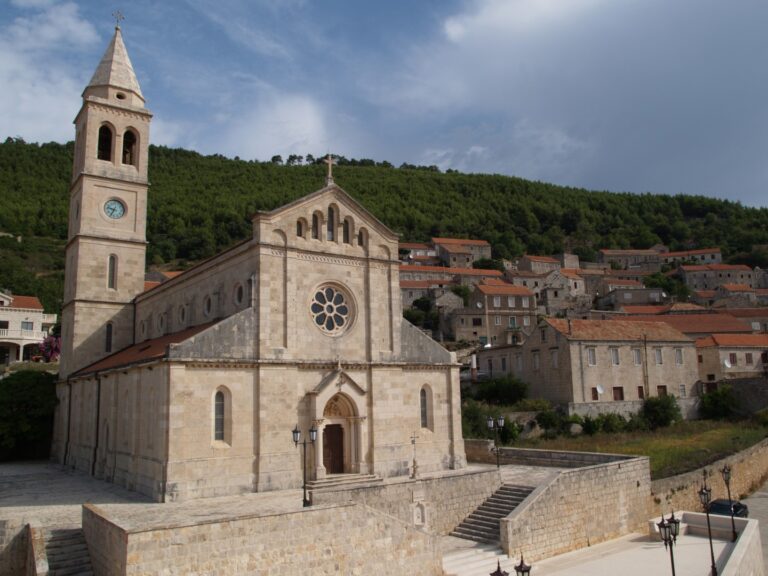

Rest in the shade of the oldest cypress tree on the island in front of the parish church in Čara and visit the shrine of Our Lady of Čarsko polje.
Three-nave parish church of St. Petra is located in the very center of the town Charm . It was mentioned for the first time in 1415. The church was rebuilt in 1728, rebuilt several times during the 19th century, and the last time in 1939. Next to the church was a loggia, subsequently demolished, on which the year 1770 was carved. Statue of St. Peter, which is now located at the side door, once occupied a place above the main door of the original chapel. The sacristy was upgraded at the beginning of the 19th century. On the main altar there is a famous painting by Leandro Bassan "Unfaithful Thomas" and a precious silver cross.
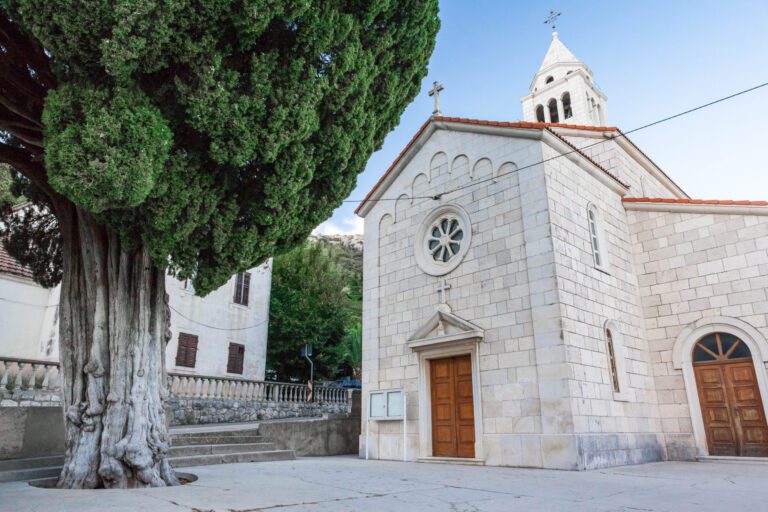

Next to the parish church of Our Lady of Snow in Pupnat, there is an old press from the time of the Austro-Hungarian monarchy.
Although a small place, in Pupnat the centuries-old knightly game of kumpanji, old bali and numerous other customs and religious traditions have been preserved. Pupnat celebrates its Day on the feast of Our Lady of the Snow, August 5, and also on August 24 of its Blessed Mark from Pupnat, whose remains are in the parish church.
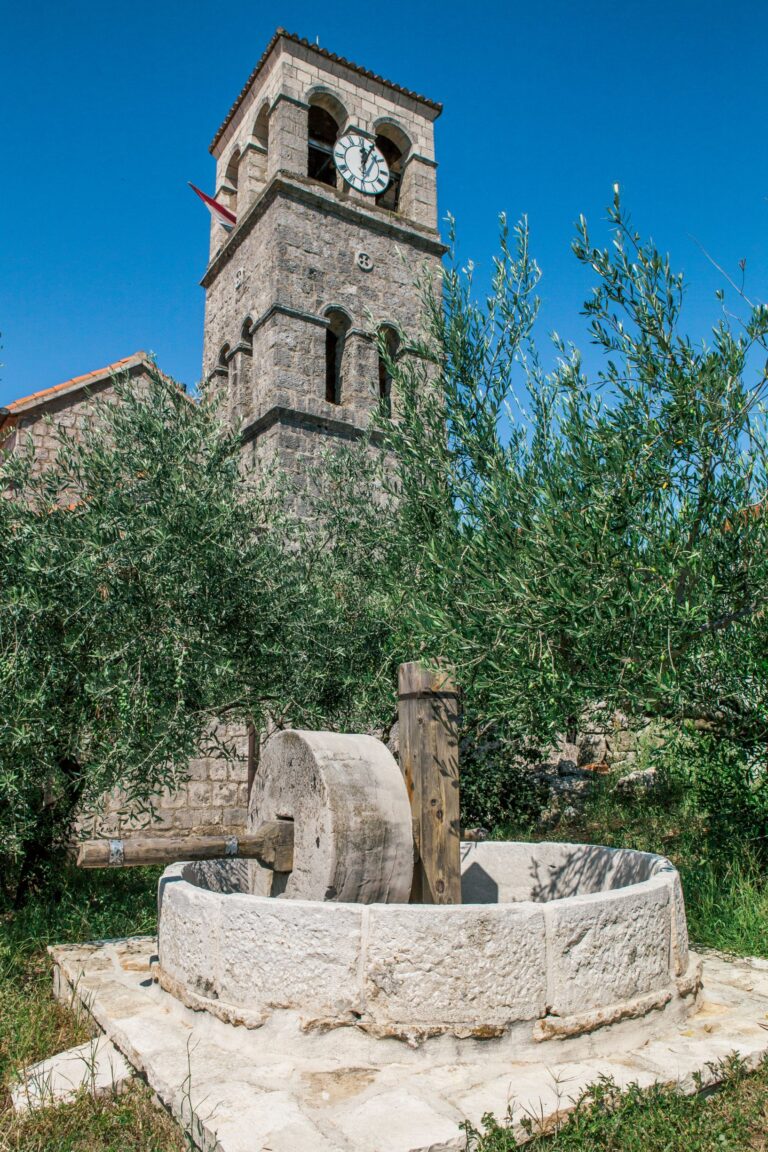

Žrnovo on the island of Korčula is one of the oldest island settlements. Its hamlets Prvo Selo, Brdo, Kampuš and Postrana, scattered among the hills, were not easy to spot from the sea.
Although the villages have their patrons, the parish church of St. Martina gathered all the inhabitants, making it the central religious and cultural point of Žrnov. It was mentioned for the first time in 1329, which is connected with the founding of the Korcula-Ston diocese in 1300.
Initially a small building like other churches in the area, the church of St. Martina has been upgraded and expanded several times. Bishop Nikola Španić (1633 – 1707) influenced numerous constructions and reconstructions in his diocese, including the church of St. Martin in Žrnov. During his time, the church acquired dimensions still visible today with baroque features.
In 2006, a bronze statue of Ivan Paul II was placed on the small square in front of the church, the work of academic sculptor Radoslav Duhović (1929-2020), originally from Žrnovo. The foot of St. Martin, a relief by the contemporary French sculptor Michel Audiard, was installed in 2021, making the Parish of St. Martin and Žrnovo included in the European pilgrimage network known as "Via Sancti Martini".
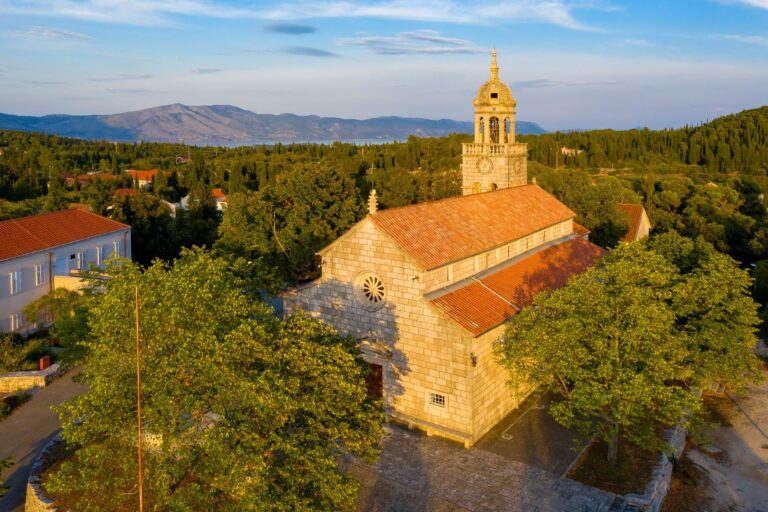

Visit Račišće, a colorful settlement with a centuries-old maritime tradition. In the village there is the old church of Our Lady Help of Christians from the time of the foundation of the village (1682), and the newer parish church of St. Nicholas.
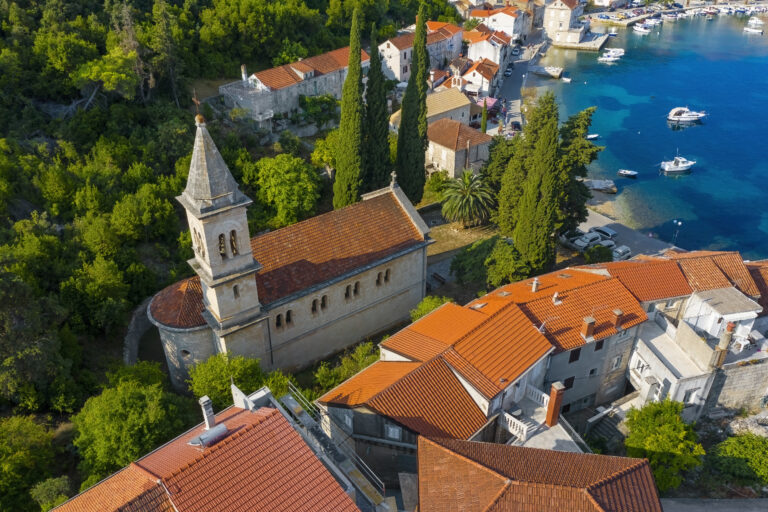

Look around Lombard, where the remains were found villa rustice and the Lumbard Psephism, an inscription in stone, which testifies to the existence of a Greek colony from the 3rd century BC.
